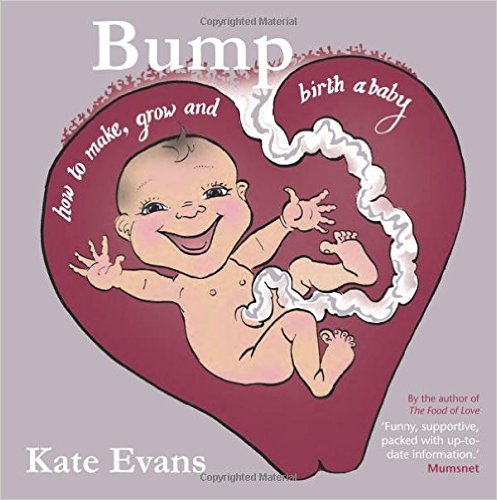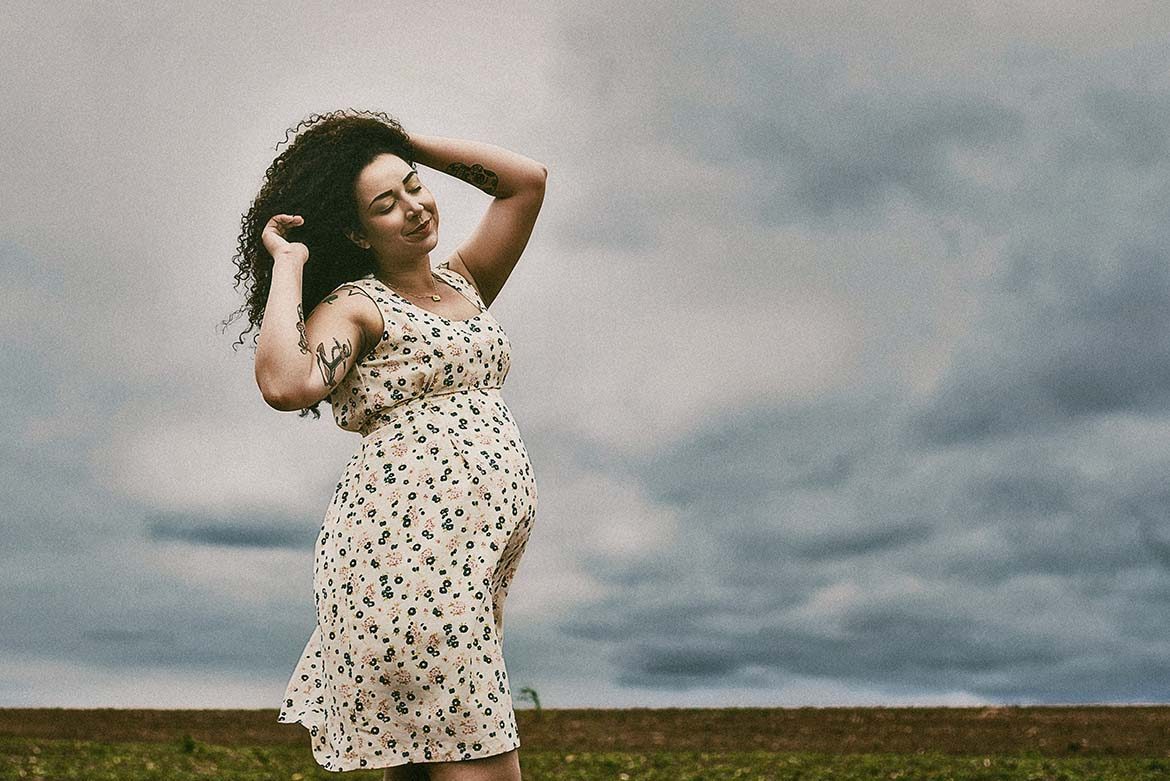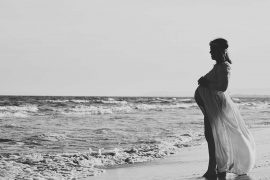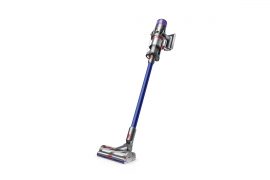A very well-researched book review by Midwife Denise Hynd
Bump: How to make, grow and birth a baby, by Kate Evans
 Beginning with a cheeky baby on the cover, ‘Bump'[1] is packed with wonderful cartoons; many laugh-out-loud funny ones, some hauntingly beautiful which accompany an at times irreverent yet sensitive, evidence based and yet visceral text, a combination which authentically depicts many of the roller-coaster rides of womanhood today.
Beginning with a cheeky baby on the cover, ‘Bump'[1] is packed with wonderful cartoons; many laugh-out-loud funny ones, some hauntingly beautiful which accompany an at times irreverent yet sensitive, evidence based and yet visceral text, a combination which authentically depicts many of the roller-coaster rides of womanhood today.
In “Functions of the Orgasms” Michel Odent said “the function of joy in pregnancy is to protect the unborn child against the effects of the harmful stress hormones“, and “to transmit from generation to generation the capacity to be joyful”, thus I recommend this book to all but especially to pregnant women.
Bump covers the full gamut of reproduction issues; through pre-conception to trying to, or not trying to conceive, early to late pregnancy development and possible losses, preparing for the baby, birth options and rights. Breastfeeding was the subject of Kate’s previous informative and entertaining book; “The Food of Love; Your formula for successful breastfeeding”[2], therefore is not addressed in this tome. The unique aspect of this book is that it offers, in evidence based text and poignant drawings, information about how women can embark on the primal and universal journey of physiological or undisturbed birth in the care of a known, sensitive and appropriately experienced midwife.
In her “Forward, forewarned….” Kate acknowledges she has left out men, and their perspectives on these things, and that she refers to the unborn child as ‘them‘ because she feels “we need gender neutral language, particularly when discussing the baby in the womb, whose person-hood can be felt before their sex can be identified.” Next comes the first of Kate’s “pick-your-own adventure moment” pages, where the reader can choose how to navigate this book according to whether they want to, in this instance on page 10; “find out how to make a baby” or not. Also throughout this book, Kate is a dispeller of fairy-tales, a realist, for example on page 29’s “pick-your-own adventure moment” she acknowledges that there are at least 6 different ways that today’s woman may have obtained sperm; not all loving nor human. I wish I could have used this book as a guide to exploring my cycle, “fruity juices” and nature’s conspiracy to aid penetration of one ‘Lily of the valley’ smelling ovum by a single, “hyper-fast wonky swimming sperm“.
Kate Evans also shows herself to be an inclusive feminist in her drawings and text, which acknowledge different racial and sexual identities, such as in the brief segment titled ‘Breeders and non-breeders’ she says we all need to respect that some women do not want children and that there are other paths including for those who are gay, straight or bi-sexual, some of whom may benefit from the practical information offered about understanding our bodies’ fertility, regardless of whether our cycles and lives are ‘regular’.
“Medicine man vs Witch doctor” on page 68, is the first example of another of Kate’s themes in this book; the critiquing of Western medicine’s limited efforts to support “our bodies’ efforts” to reproduce. Overall, this book offers an holistic, ecologically sustainable and physiological approach to fertility and childbearing, with info-graphics on complementary therapies such as acupuncture, inclusion of varying emotional states in the “Things that go bump” chapter (p 154) to “The psycho-bitch-from-hell feeling“(p 84), as well as practicalities; like explaining how to connect with one’s ‘Butterfly kissing baby in the womb, other than through scans (page 147) to The broke mum’s budget baby list” section (p 176) .
In addition, Kate’s sensitive realism shines through in her efforts to address critical matters such as partner abuse; where she acknowledges the difficulties women have in accepting or leaving a relationship which was thought to be born of ‘love’, but is in-fact toxic for herself, her baby and sadly could become lethal in a culture “which romanticise arrogant emotionally unavailable men, which blame women for being victims.” Chapter 13 “Ask Aunty Katy” (p 195) is the epitome of this book’s relaxed, girl-friend style and efforts to turn fears into good news such as “There’s a reason for the anatomical proximity of anus and birth canal and, If you can get through the birth of your child without simultaneously throwing up and wetting yourself, you’re doing better than me“.
Readers outside, and possibly inside of the UK, probably need references, which indicate safe bed-sharing is supported by the UK Baby Friendly Hospital Initiative[3] and National Institute on Clinical Evidence (NICE) as well as backed by UK[4] and international[5] research, attached to or inserted into the info graphic on it (p 177).
One New Zealand reviewer of this book suggested that Chapter 15; “Crossing the sea” should be a pull out frieze for women in early labour[6]”. As a midwife I appreciate the woman-to-woman encouragements and entreaties to go forth into labour and birth; “To remember your baby loves you. Close your eyes and journey in your mind to somewhere beautiful with your baby. Talk to your baby, tell them it is time to come through.” It is unique and invaluable that birth is presented as “what has happened when women have had babies since time immemorial” (p 227), mostly without men or in some-one else’s domain, so it would like homebirth for those in today’s birthing culture.
It is also vitally important that this account includes an understanding of the labour and birth hormones, as well as the factors which can enhance or limit their working, as a key ingredient in the unfolding process. It is fitting that legendary English Midwife Mary Cronk[7] is the model for Kate’s wise-woman, knitting midwife, as Mary has helped midwives all over the world retain the knowledge to support and assist the natural birth of all babies[8] but especially twins and breech[9] babies. Her crone encourages the ability of Monkey Mamma’s inner, ancient mammalian brain to work sending out hormones which make the womb-work till the last act of procreative genius whereby the living ligatures of her womb births the placenta and stems bleeding. This is in contrast to pace and tone of the next; “Totally Bananas, which, though it begins; “Who put men in charge of childbirth? I mean honestly, what was that about?” is actually an evidence based and historical review of medicalised childbirth. Thereafter follows less emotive sections on the physiological needs of labouring women, different maternity systems, women’s “Birth rights” and other birth options including a positive caesarean section (p284). The book ends as it began with a cherubic baby, though this time in the form of another of Kate’s info-graphics; the “New centre of the Universe“.
I think the disclaimer and entreaty that “this book doesn’t have all the answers, but it might inspire you to further research” would be more appropriate as part of a separate section titled ‘Further Reading”, rather than placed at the beginning of the ‘References and Index’. This is because there is a lot more information as well as international, national and local support groups for issues addressed in this book, which readers could have been encouraged to Google. However, overall I am thankful that someone has put humour, emotions and fact in such a delightful package for women and their midwives, and I would like to see this book on the reading lists of all Childbirth Education and Midwifery courses.
[1] https://www.amazon.com/Bump-Make-Grow-Birth-Baby/dp/190843435X
[2] https://www.amazon.com/Food-Love-Formula-Successful-Breastfeeding/dp/0954930959
[3] http://www.unicef.org.uk/BabyFriendly/News-and-Research/Research/Bed-sharing-and-infant-sleep/
[4] https://www.isisonline.org.uk/
[6] http://homebirth.org.nz/magazine/article/bump-how-to-make-grow-and-birth-a-baby-by-kate-evans/
[7] http://www.homebirth.org.uk/marycronk/
[8] https://www.rcm.org.uk/about/who-we-are/mary-cronk
[9] http://www.aims.org.uk/Journal/Vol10No3/handOffbreech.htm
Denise Hynd is a midwife at Birth Matters.




